

Write what you are looking for and press enter to begin your search!

Live News
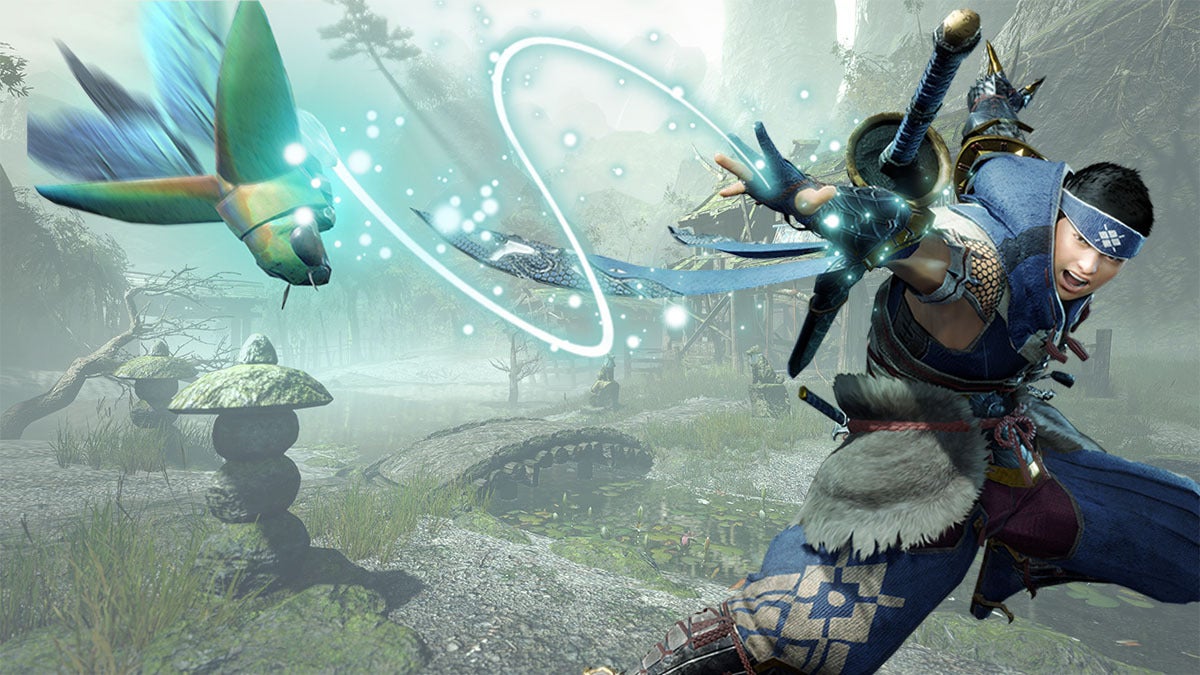

Monster Hunter Rise Guide: Basic and Advanced Wirebug Techniques
Monster Hunter Rise has made hunting dangerous wildlife even more exciting with anew core mechanic called the Wirebug. With the help of a tiny glowing insect that can apparently carry even the heaviest of humans, the Wirebug is a handy pseudo-grappling hook that can be used anywhere and anytime.
The Wirebug provides all kinds of tricks at your disposal. You can quickly recover from a fall, put some distance between yourself and a monster, or use it to close in and press the advantage. You can even use it to stun monsters. However, monsters have also become faster and deadlier than ever in Rise, meaning that you’ll have to master all the intricacies of the Wirebug to come out on top.
The Wirebug requires a complex combination of buttons to pull off all its different actions. We’ll teach you the key components of the Wirebug so that you’ll be able to take down the monsters of Kamura in style.
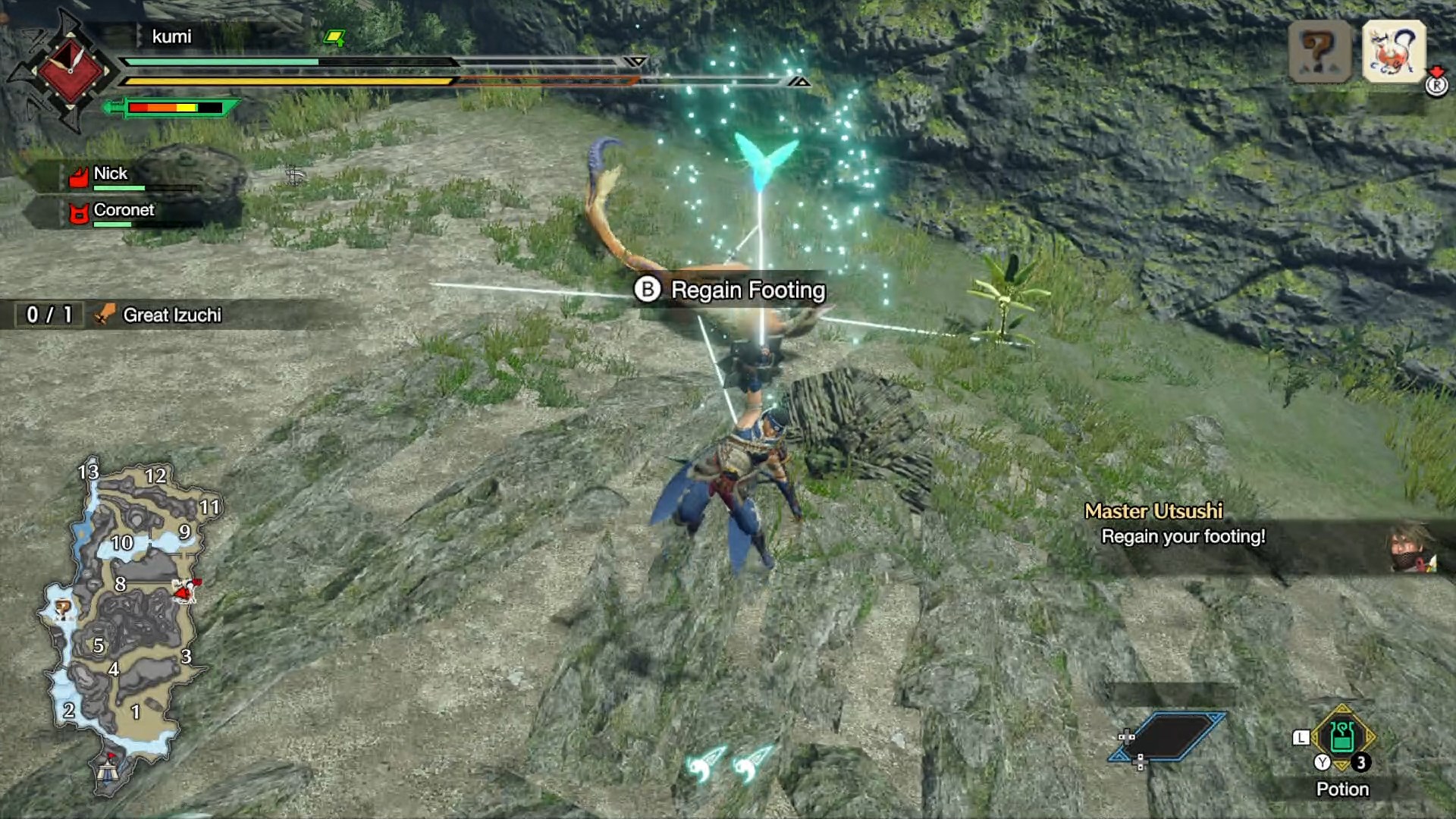
Monster Hunter Rise pops the lid wide open when it comes to freedom of movement thanks to the Wirebug. To access the Wirebug, hold the ZL button while your weapon is unsheathed (press the Y button if a weapon is drawn). You’ll see a reticule appear onscreen, meaning that you now have access to the Wiredash feature.
If you’ve played a modern shooter, you’ll no doubt feel at home here. Like pulling the trigger on a gun, pressing ZR will throw the Wirebug where the reticule is pointed and hoist the Hunter in that direction. For most players, this is the recommended way for traversal since this it offers the greatest control over the verticality and horizontality of your movements. This can be used both on the ground and while airborne.
Monster Hunter already has a roll, but what if you wanted something more? Using ZL + A allows you to dash quickly in a horizontal direction and even further than you can with a roll. Given how many monsters have wide sweeping attacks, it always helps to be able to put that small extra distance between yourself and danger.
In a way, this is your jump button. Hitting ZL + X will have the Hunter pull themself into the air with the Wirebug. This airborne state is similar to if you were using ZL + ZR, but without the hassle of aiming your reticule.
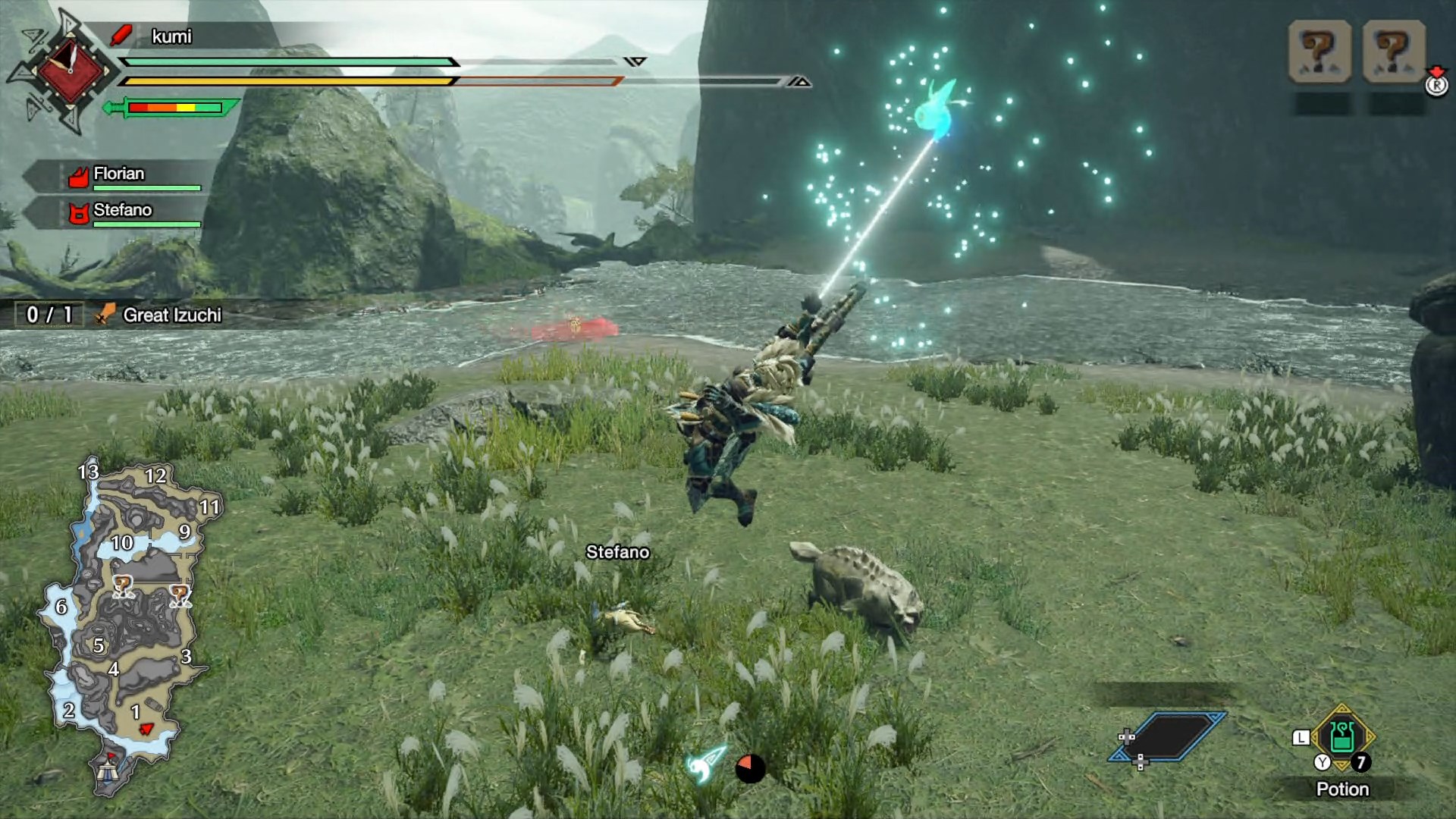
So you’ve used your Wirebug and are now in mid-air. What next, you might ask? A lot of things, actually! Whether you’re playing it safe or trying to be aggressive, there are plenty of options to try out.
Other games have double jumps, but in Rise, we evade sideways for more air time. The direction of your evade can be controlled with the left analog stick. Besides using it to prolong your time in the air, you can also use it for better positioning or getting out of harm’s way.
With the help of the Wirebug, you can stop yourself mid-air by hanging down from the little critter. You can use it to pause and survey your surroundings, or to give yourself some time to replenish your stamina. To exit this state, you can either press B to drop down/evade or hold ZL to perform a Wirebug command. Keep in mind that you cannot use this technique after an air evade.
Like any old Monster Hunter game, you can press X while airborne to deliver a powerful blow from above. What more do we need to say?
Being in the air can be fun, but it sometimes also leaves you wide open to attacks. By using ZL + A, the Hunter will toss the Wirebug towards the ground to quickly zip downwards. This is by far the best way for you to get back to solid land ASAP, especially compared to falling the usual way.
While airborne, using ZL + X will allow you to lunge forward horizontally. This is great for reaching longer distances in the air that a typical evade won’t cover.
Getting swatted by a monster’s tail never feels great. It’s even scarier if your Hunter is still busy eating dirt when the monster’s already ready to get its second hit in. Well, if you have a Wirebug gauge, then you can use ZL + B to instantly recover from a hit and escape danger. This action will also automatically sheathe your weapon, giving you a head start with potions to recover your lost health.
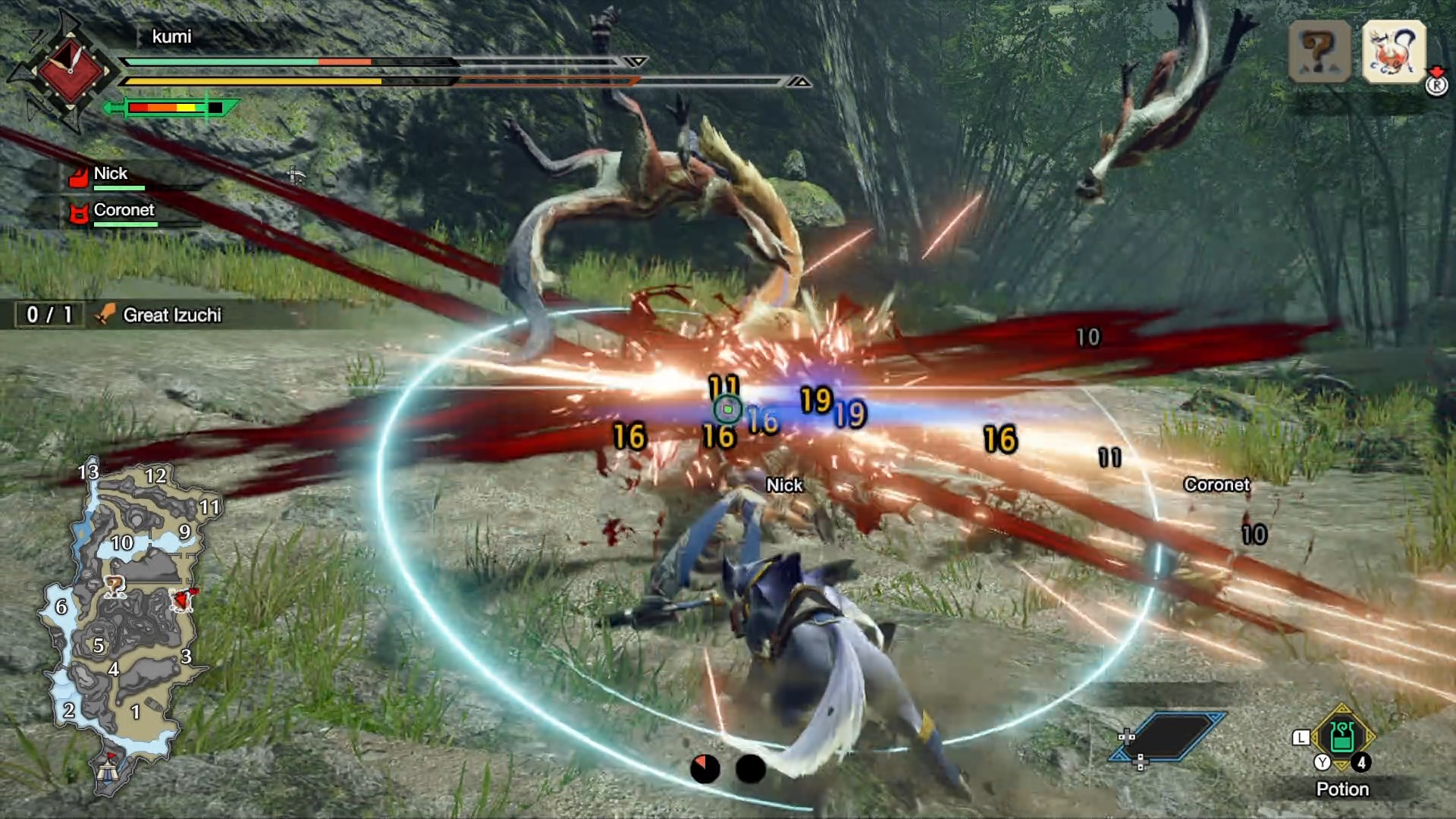
As we mentioned earlier, Wirebugs can also incapacitate monsters thanks to a technique called Skillbind. Skillbind techniques are attacks which combine weapons with the Wirebug to slowly coat a monster in its unique silk. Each weapon has its own set of Skillbind attacks which can only be performed when the weapon is drawn.
Once you’ve accumulated enough Skillbind attacks on a monster, they’ll be incapacitated, giving you an opening to mount them (Wyvern Riding).
Depending on whether you use ZL + X or ZL + A, the type of attack that comes out may appear quite different. Pay attention to your Wirebug gauge while performing these commands, as they consume either one or two gauges. Naturally, the attack consuming more gauges will be more effective, but comes with a higher risk, and vice versa.
If you have a ranged weapon drawn, the ZL button will be reserved for aiming down your weapon. Because of this, you’ll have to hold the R button down instead to access the Wirebug functionality. R + X and R + A will both result in different Skillbind attacks, working similarly to the melee versions of the technique. This sudden change in control scheme can be awkward and confusing, but thankfully it’s a small exception that can be overcome with a small bit of practice.
After enough Skillbind attacks have been used on a monster, they’ll be momentarily downed. Interacting with the monster in this state will then activate the mounted state called Wyvern Riding. You will have complete control of the monster for a brief period, but once this duration ends, you’ll have to wait for an extended hidden cooldown before being able to mount the monster again.
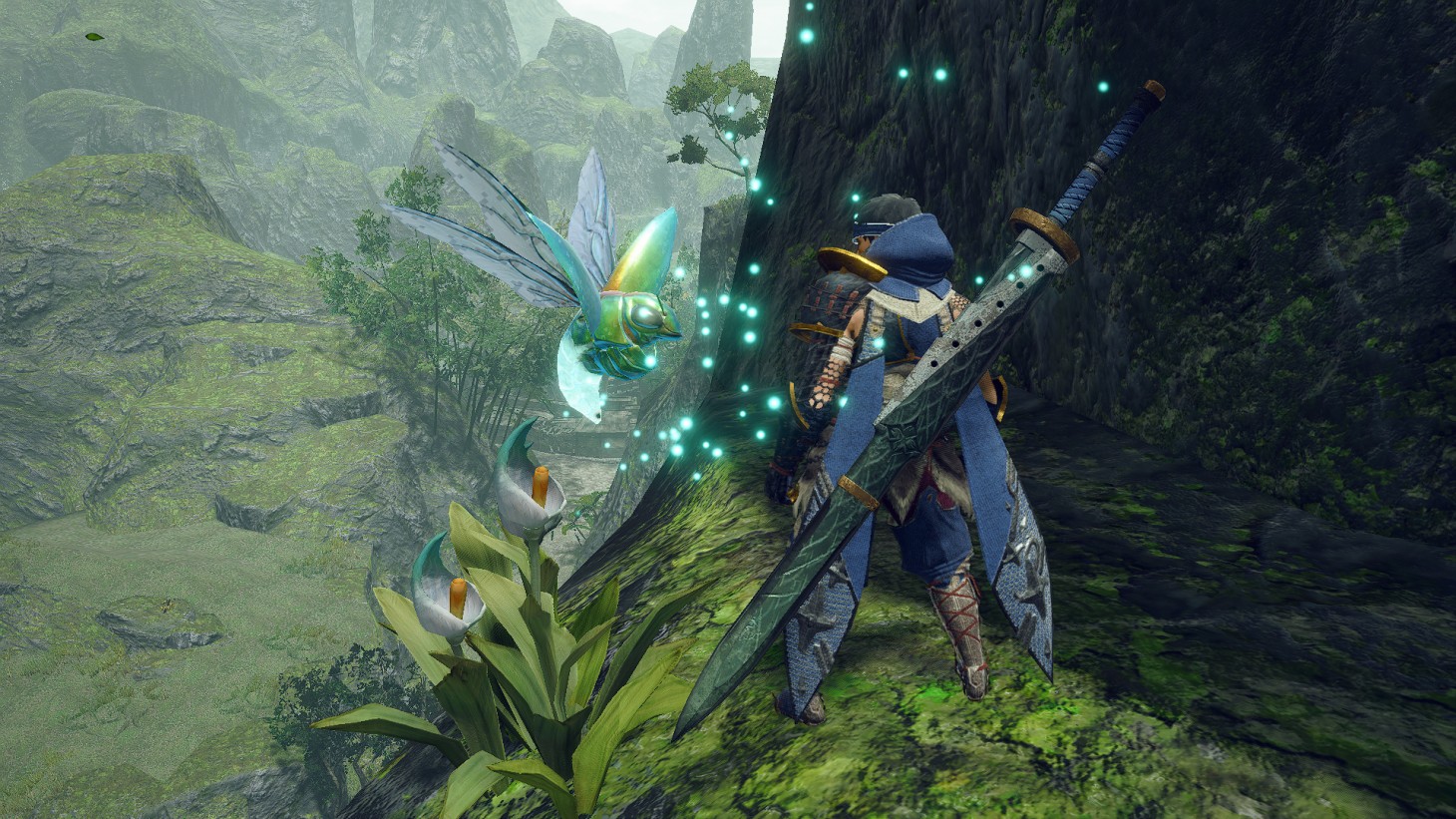
Wall climbing is turning out to be one of the coolest traversal techniques in Monster Hunter Rise, so here’s how you can perform it properly.
To start climbing walls, initiate a Wiredash command (ZL + ZR or similar) while facing a surface. This uses up one Wirebug gauge, but you Hunter will automatically begin climbing after the command. Next, hold sprint (R button) to start running up the wall. You can use the left stick to control whether your Hunter runs upwards or sideways. This will continue for a fixed duration or until you run out of stamina.
But what if you wanted to keep going?
You can press B to hop off the wall, or keep sprinting until the Hunter jumps off automatically. Once you’re airborne, you can execute a Wiredash to return to the wall and resume climbing. If you’re running low on stamina, you can hang midair with the A button. This allows you to rest up for a bit before Wiredashing back to the wall. Since Monster Hunter Rise features biomes with lots of verticality, you’ll no doubt be using this trick quite often.
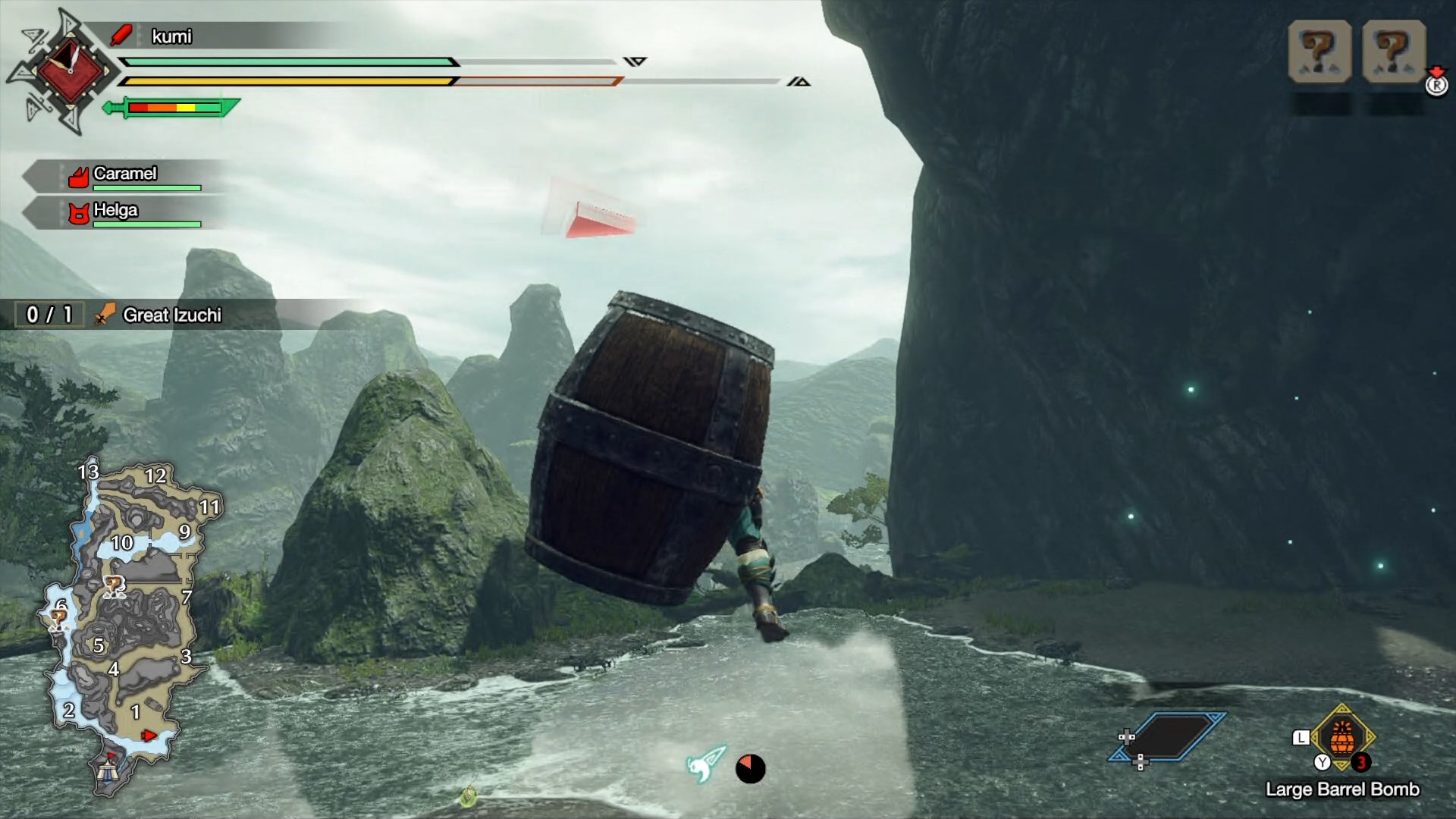
There isn’t a Monster Hunter fan out there who doesn’t know about Barrel Bombs and the satisfaction that comes from their explosions. If you’re looking for more of that in Rise, you might be interested in this brand-new way of setting up Barrel Bombs.
After going airborne with the Wirebug, use a Barrel Bomb to have your Hunter toss one directly downward, after which it’ll explode upon contact with the ground. Not only is this technique great for landing a hit on an unsuspecting monster, it also lets your Hunter to linger a little while longer in the air to replenish your Wirebug gauge.
Swinging is one other traversal technique that will no doubt see a lot of use in Monster Hunter Rise. There are a few different ways to swing, but the simplest way to swing without getting the controls mixed up is with the ZL + ZR command. Simply aim upwards and then execute a Wiredash. Next, use your directional stick + B to build more air time before Wiredashing again. By aiming your Wiredash upwards, you will be able to easily maintain your height. If you want to stop yourself mid-air, use the A button instead of direction + B.
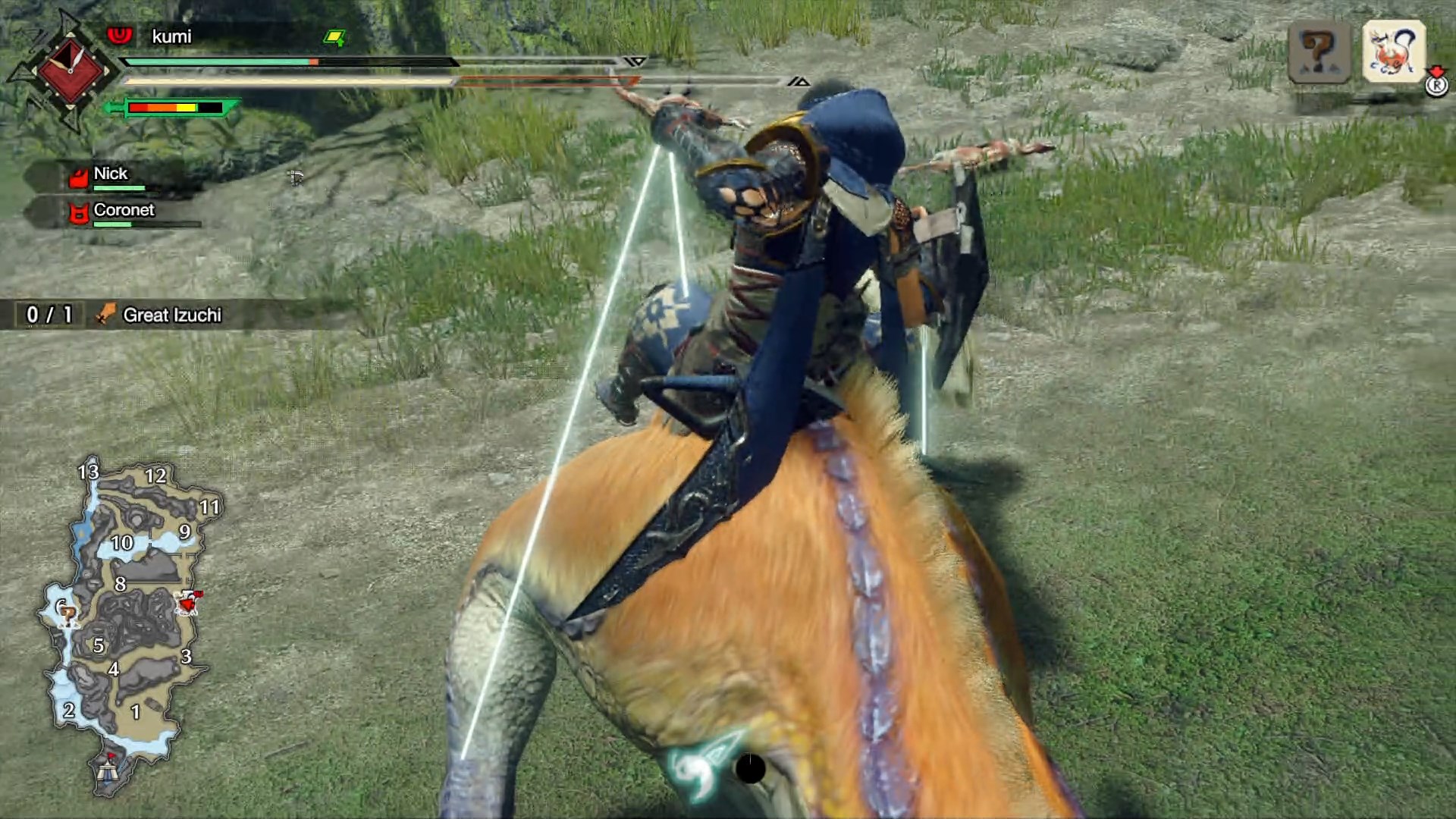
As you may have noticed, the old mount system of Monster Hunter has been replaced with a new system called Wyvern Riding. Before, you’d be able to perform aerial attacks on monsters and eventually mount them over several tries. However, this system has been replaced with Wyvern Riding, which places an emphasis on landing Skillbind arts instead to make monsters mountable.
Aerial attacks aren’t made completely useless. They can still put monsters in a mountable state when performed after a Wiredash. Having monsters fight each other, as well as interacting with endemic life such as Puppet Spiders will also put monsters in a mountable state.

By Jon Toyad|November 11, 2021
Far Cry 6's first DLC expansion, Vaas: Insanity, will be out later this month on 16th November. The DLC will put players in the shoes of Vaas Monte...
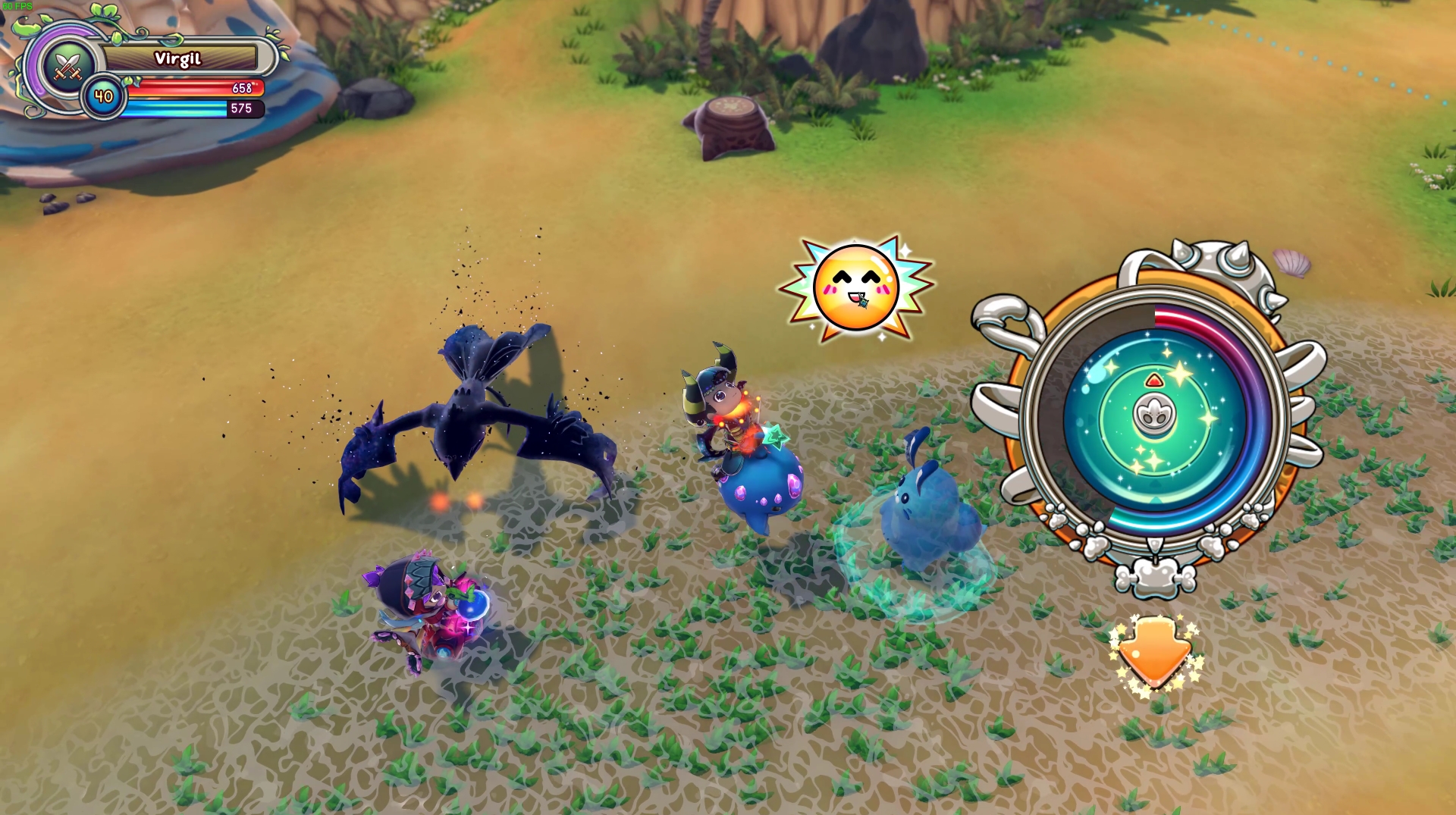
By Jon Toyad|August 30, 2022
Publisher 505 Games and developer Magnus Games Studio announced that Re:Legend will leave Early Access and launch for PC (Steam) this 6th of September...
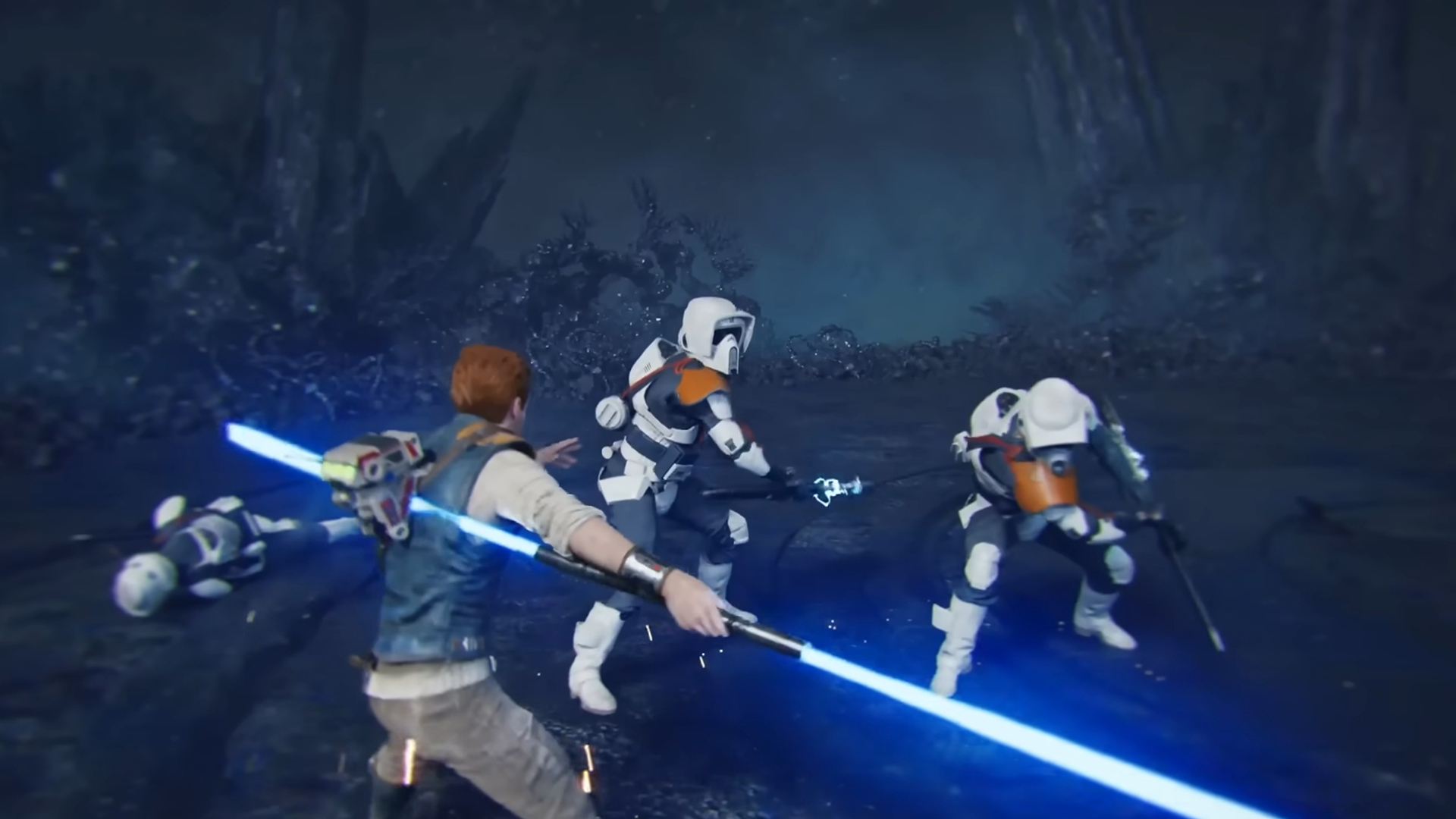
By Alleef Ashaari|February 20, 2023
EA’s Respawn Entertainment has unveiled new gameplay footage of Star Wars Jedi Survivor via IGN Fan Fest last weekend. What's interesting about the ...

By Lewis Larcombe|December 15, 2024

By Jon Toyad|December 4, 2024

By Lewis Larcombe|November 29, 2024

By Kakuchopurei|November 23, 2024

By Alleef Ashaari|January 3, 2025

By Alleef Ashaari|January 3, 2025

By Jon Toyad|January 3, 2025

By Lewis Larcombe|December 15, 2024

By Jon Toyad|December 4, 2024

By Lewis Larcombe|November 29, 2024

By Kakuchopurei|November 23, 2024

By Lewis Larcombe|December 15, 2024

By Jon Toyad|December 4, 2024

By Lewis Larcombe|November 29, 2024

By Kakuchopurei|November 23, 2024
Copyright @ Kakuchopurei 2025